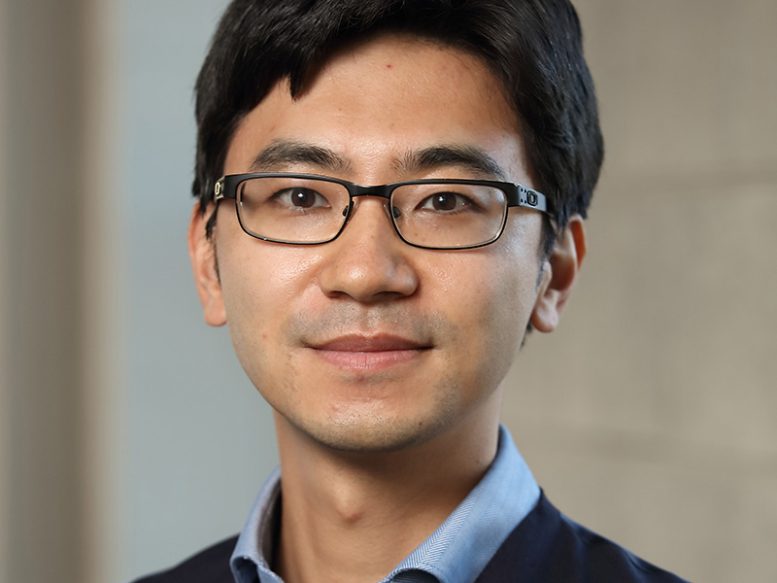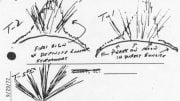
The quest for a theory of everything, tracing back to before Archimedes and significantly advanced in the last century through Albert Einstein’s theory of general relativity and quantum mechanics, has encountered a major challenge due to their conflicting explanations of gravity. Kent Yagi’s innovative research at the University of Virginia, utilizing artificial intelligence and backed by a prestigious CAREER grant from the National Science Foundation, aims to bridge this gap, offering new insights into gravity and the universe’s fundamental forces, while also enhancing STEM education through community and educational outreach. (Artist’s concept). Credit: SciTechDaily.com
Long before Archimedes suggested that all phenomena observable to us might be understandable through fundamental principles, humans have imagined the possibility of a theory of everything. Over the past century, physicists have edged nearer to unraveling this mystery. Albert Einstein’s theory of general relativity provides a solid basis for comprehending the cosmos at a large scale, while quantum mechanics allows us to grasp its workings at the subatomic level. The trouble is that the two systems don’t agree on how gravity works.
Today, artificial intelligence offers new hope for scientists addressing the massive computational challenges involved in unraveling the mysteries of something as complex as the universe and everything in it, and Kent Yagi, an associate professor with the University of Virginia’s College and Graduate School of Arts & Sciences is leading a research partnership between theoretical physicists and computational physicists at UVA that could offer new insight into the possibility of a theory of everything or, at least, a better understanding of gravity, one of the universe’s fundamental forces. The work has earned him a CAREER grant from the National Science Foundation, one of the most prestigious awards available to the nation’s most promising young researchers and educators.
Breakthroughs in Observing the Universe
One aspect of Einstein’s theory of general relativity is that objects moving through space generate waves, much like a boat moving through the water, but even when those waves are created by planets, stars and galaxies, or even black holes that can create the strongest gravitational fields possible, they are still incredibly small. Consequently, it was almost a hundred years after Einstein first published his ideas on gravitational waves that the technological means to observe them were developed. In 2015, a program known as LIGO, or the Laser Interferometer Gravitational Wave Observatory, one of the largest projects ever funded by the NSF, detected gravitational waves for the first time, which led to a Nobel Prize in Physics for the project’s leaders.

Physicist Kent Yagi, an associate professor with the University of Virginia’s College and Graduate School of Arts & Sciences has won a CAREER grant from the National Science Foundation, one of the most prestigious awards available to the nation’s most promising young researchers and educators. University of Virginia College and Graduate School of Arts & Sciences
“The discovery was one of the most important moments in physics in the last hundred years,” Yagi said.
And as the technology needed to observe subatomic phenomena advances, the computing capacity necessary to process massive amounts of data astronomers are collecting about the universe has also advanced. Additionally, new developments in machine learning and artificial intelligence in recent years are allowing scientists to create and test complex mathematical models describing the phenomenon they observe at a pace that was once unimaginable.
Yagi studies the massive gravitational waves generated by pairs of black holes and binary neutron stars – some of the densest objects in the universe that are as much as 1013 times more powerful than a typical fridge magnet, according to Yagi – and he uses those phenomena to test Einstein’s theories about gravity and to probe the fundamental laws of nuclear physics looking for information that will help resolve the disconnect between Einstein’s theory and quantum mechanics.
Funding and Educational Outreach
The CAREER grant, which will bring $400,000 in funding to the College over the next five years, will create opportunities for current and future graduate students interested in developing and applying machine learning algorithms that will help explain and predict gravitational wave observations and give us a deeper understanding of gravity’s behavior.
Once the computational algorithms are fine-tuned – a process that should take as little as a few weeks – Yagi said his team will be able to process the data collected by LIGO to test Einstein’s theory a hundred times faster.
“And the amount of space we can search for that data will increase by a factor of ten,” Yagi said.
One of the requirements of the CAREER award is that recipients also build educational and community outreach projects into their work, and some of the funding will create jobs for undergraduates who will work with Yagi to develop educational software for high school students interested in physics, which, Yagi hopes, will inspire the next generation of Nobel-prize winning scientists.
The Challenge of Proving Theories
How much closer will this bring us to a theory of everything?
“There are still a lot of problems to be solved,” Yagi said. “I’m hoping I’ll see it in my lifetime, but I don’t want to be too optimistic.”
“Proving a theory is almost impossible,” Yagi explained. “There’s always going to be measurement error in any experiment, but we’re going to keep trying to see if we find some evidence to disprove general relativity. At the same time, we just keep discovering how beautiful and correct it appears to be.”
Yagi’s work and the attention it’s receiving drew praise from his colleagues and leaders at UVA.
“There’s been a very big push recently to better understand gravitational waves not only as a theoretical prediction or concept but to be able to directly detect them, said Phil Arras, chair of UVA’s Department of Astronomy. “That effort has opened up an entirely new window into the universe and given us a new way to check our theories about how stars evolve. Kent’s research has been very important for our understanding of that.”
Despina Louca, chair of UVA’s Department of Physics called Yagi a highly respected astrophysicist with a vast research portfolio.
“Kent is an engaging educator and a sought-after mentor whose work has had tremendous impact across several physics disciplines,” Louca added. “He is paving the way to using machine learning to test general relativity while exploring astrophysical properties of neutron stars, and his work with UVA students building online games that integrate research and education will inspire young people around the world.”
“Professor Yagi’s work is remarkable,” said Christa Acampora, dean of the College and Graduate School of Arts & Sciences, “We’re proud to have him as a member of our faculty, not only for the recognition he’s receiving as he advances the boundaries of our understanding about the universe but also for his commitment to innovation in STEM education.”








You can’t hope to come up with a “theory of everything” until you know – everything. And that will never happen.
GIGO
Genrel In – Generel Out
I’m pretty sure that 1013 times more powerful than a fridge magnet should be 10^13, or if that gets stripped out, power(10, 13).
Again, for some, as a now eighty year old lay American male ineligible for any research grants who ‘insighted’ how gravity really works back in 2009 and uploaded a first video of at-home experiments in 2012, YouTube first then Odysee dot com (after being censored on YouTube about the Covid-19 ‘scamdemic’ and the real causes of most chronic diseases; https://odysee.com/@charlesgshaver:d/1Gravity:8), I dread to see such a promising young scientist waste his time researching the imaginary; gravity waves. As I tried to inform LIGO after they announced their first ‘success’ in 2015, there was a volcanic eruption on a Japanese island at the same time. It all started with particles being misinterpreted to be waves in the early double-slit experiments in which pulsing lines of locally generated gravity force actually caused the photons or electrons to move side to side to create a scattering of dots. In the long run, I doubt that AI will ever equal human IA (Innate Aptitude).
I had developed a Unified Field Model that proves Einstein was half right and had tunnel vision.
The vastness of the quantum is equal to the vastness of the universe.
Isaac Asimov wrote the science fiction story “The Nine Billion Names of God.” Scientists set a computer to naming them, because humans were too slow. When the computer finished the job, the stars began to disappear. Everything else was next, all back to nothing.
Although I think it is absurd to believe that humans can ever understand anything about existence, what if we figured it out? When we finally know everything, what then? I suspect that it would be our end. When the mystery is gone, so is our life.
Even though we never can get to the bottom of things, if we are going to keep on thinking about it, the first item on the list should be space. I mean the three dimensions. Space is not nothing. Where did it come from? If we can figure that out, the rest would be easy. No chance of it, though.